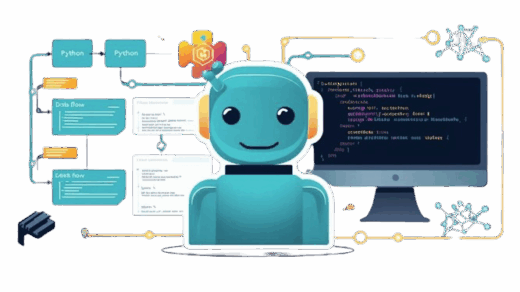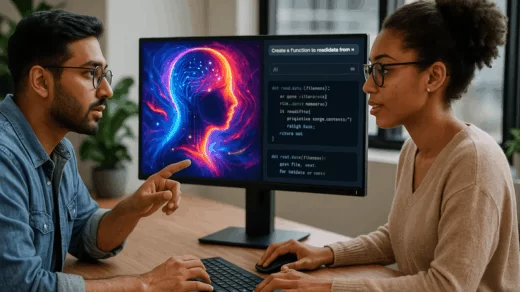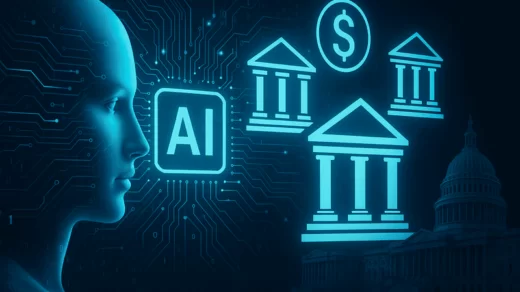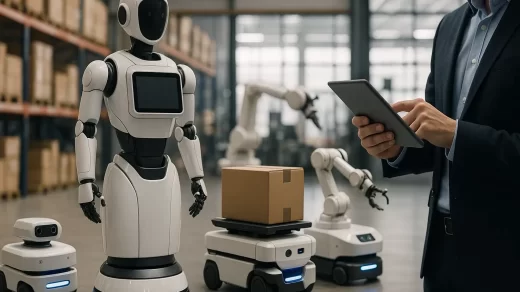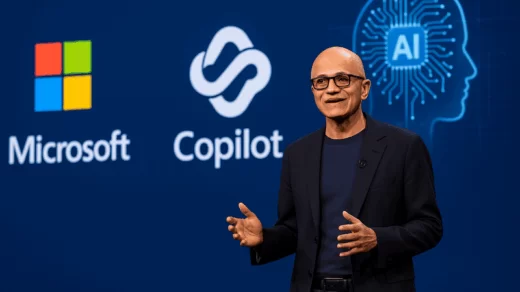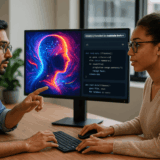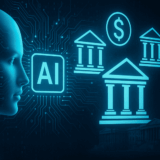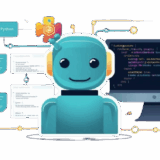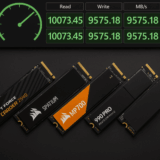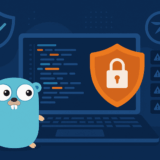Vibe Coding: The Future of Software Development
How AI coding assistants are revolutionizing development workflows, enhancing creativity, and transforming the way we build applications.
Software development is experiencing a paradigm shift that’s as profound as it is controversial. “Vibe coding” – a buzzy phrase that describes using AI language tools to write software where you enter a natural language phrase for what you want and get back code – is rapidly becoming one of the most significant trends reshaping how developers approach their craft. This emerging methodology represents more than just a new tool; it’s fundamentally changing the relationship between human creativity and machine capability in software development.
As we stand at the threshold of 2025, vibe coding has emerged as one of the biggest AI trends, promising to democratize programming while simultaneously raising questions about the future of traditional coding practices. The movement has gained such momentum that major tech companies are racing to develop and refine their own vibe coding platforms, with recent entries including Mistral’s release of its own ‘vibe coding’ client, Mistral Code, to compete with incumbents like Windsurf, Anysphere’s Cursor, and GitHub Copilot.
Understanding the Vibe Coding Revolution
At its core, vibe coding represents a fundamental shift in how developers interact with code. As defined by its originator, vibe coding is where “you fully give in to the vibes, embrace exponentials, and forget that the code even exists”. This philosophy encapsulates a development approach that prioritizes rapid iteration, creative exploration, and intuitive problem-solving over traditional methodical coding practices.
The concept challenges conventional programming wisdom by encouraging developers to think in terms of desired outcomes rather than implementation details. Instead of meticulously planning each function and variable, vibe coding allows developers to express their intentions in natural language and let AI assistants handle the translation to executable code.
This approach is particularly powerful for rapid prototyping, creative experimentation, and bridging the gap between technical and non-technical team members. The major appeal of vibe coding lies in how easy and accessible it is, with AI assistive tools making it much quicker to produce code and whip up small projects like a prototype website, game, or web app than it would be for a human.
The Technology Powering the Movement
The vibe coding revolution is enabled by sophisticated AI coding assistants that have evolved far beyond simple code completion tools. AI coding assistants have revolutionized software development by providing real-time code suggestions, automating repetitive tasks, and enhancing developer productivity.
Modern AI coding platforms leverage large language models trained on vast repositories of code, documentation, and programming patterns. These systems can understand context, maintain coding style consistency, and even debug issues in real-time. Key capabilities include autonomous assistance where developers rely on AI tools that can complete multi-step tasks with minimal guidance, context-aware coding that understands full codebases and API structures, and real-time collaboration where AI becomes a collaborative partner offering suggestions and even reviewing pull requests.
The sophistication of these tools has reached a point where they can handle complex programming tasks, understand project architecture, and maintain consistency across large codebases. This technological foundation makes vibe coding not just a novelty but a practical development methodology.
Leading Platforms and Tools
The vibe coding ecosystem is dominated by several key players, each offering unique approaches to AI-assisted development. GitHub Copilot, developed in collaboration with OpenAI, has established itself as a pioneer in the space. Developers who use GitHub Copilot report up to 75% higher satisfaction with their jobs than those who don’t and are up to 55% more productive at writing code without sacrifice to quality.
Cursor has emerged as a significant competitor, positioning itself as a comprehensive AI-powered development environment. Built to make developers extraordinarily productive, Cursor markets itself as “the best way to code with AI”. The platform focuses on providing real-time code suggestions as you type, automatic error detection with suggested fixes, and productivity improvements by reducing time spent on mundane coding tasks.
The competitive landscape continues to evolve rapidly, with new entrants regularly joining the market. Each platform brings unique strengths, from specialized language support to advanced context understanding, creating a diverse ecosystem that caters to different development needs and preferences.
Transforming Development Workflows
Vibe coding is fundamentally altering how development teams approach project planning, implementation, and collaboration. Traditional waterfall and agile methodologies are being supplemented or replaced by more fluid, experiment-driven approaches that embrace rapid iteration and continuous refinement.
In vibe coding workflows, developers often begin with high-level concepts expressed in natural language, allowing AI assistants to generate initial implementations that serve as starting points for further refinement. This approach enables faster prototyping, more creative exploration of solutions, and reduced time spent on boilerplate code.
The methodology particularly excels in environments where rapid experimentation is valued over perfect initial implementations. Startups, hackathons, and creative projects have embraced vibe coding as a way to quickly test ideas, validate concepts, and iterate on solutions without getting bogged down in technical implementation details.
Enhancing Creativity and Innovation
One of the most compelling aspects of vibe coding is its potential to enhance developer creativity. By removing much of the mundane, repetitive work associated with traditional programming, AI assistants free developers to focus on higher-level problem-solving, architectural decisions, and creative implementation approaches.
The technology enables developers to explore multiple solution paths quickly, test different approaches without significant time investment, and experiment with unfamiliar technologies or frameworks. This capability is particularly valuable for cross-functional teams where non-technical members can contribute directly to the development process through natural language specifications.
Vibe coding also democratizes programming by lowering the barrier to entry for newcomers. Individuals with domain expertise but limited programming experience can leverage AI assistants to implement their ideas, potentially leading to innovative solutions that might not emerge from traditional development processes.
Industry Applications and Use Cases
The applications of vibe coding span across numerous industries and use cases. In data science, practitioners are using AI-assisted coding to build portfolio projects that stand out, streamlining the process of data analysis, visualization, and model development.
Web development has seen particularly strong adoption, with developers using vibe coding to rapidly prototype user interfaces, implement backend APIs, and integrate complex functionality. The approach is especially effective for creating minimum viable products (MVPs) and proof-of-concept applications.
Mobile app development, game development, and automation scripting have also benefited significantly from vibe coding approaches. The methodology’s strength in rapid prototyping and iteration makes it ideal for projects where speed to market and creative exploration are prioritized.
Addressing Security and Quality Concerns
Despite its benefits, vibe coding faces significant challenges, particularly regarding code security and quality. Multiple studies show that AI-generated code is remarkably insecure, yet experts indicate it’s up to industry to figure out a way to limit the issues the technology introduces.
These security concerns stem from AI models being trained on code repositories that may contain vulnerabilities, outdated practices, or insecure patterns. When AI assistants generate code based on these patterns, they can inadvertently reproduce security flaws in new applications.
The industry is actively working to address these challenges through improved training methodologies, security-focused AI models, and enhanced code review processes. Many organizations are implementing hybrid approaches that combine the speed and creativity of vibe coding with traditional security review and testing practices.
Industry Perspectives and Skepticism
Not everyone in the tech industry is fully embracing the vibe coding movement. Microsoft Azure CTO Mark Russinovich challenges AI coding hype, warning that current tools can’t handle complex software projects and suffer from reliability issues.
These concerns reflect broader questions about the limitations of current AI technology and the importance of maintaining rigorous software engineering practices. Critics argue that while vibe coding may be effective for simple projects and prototypes, complex enterprise software development still requires traditional methodical approaches, comprehensive testing, and deep technical understanding.
The debate highlights the need for balanced approaches that leverage AI assistance while maintaining the rigor and reliability required for production software systems. Many development teams are finding success by using vibe coding for certain phases of development while relying on traditional practices for critical system components.
Skills Evolution and Developer Impact
The rise of vibe coding is prompting a fundamental reevaluation of developer skills and career trajectories. As AI handles more routine coding tasks, developers are increasingly focusing on skills like system architecture, user experience design, problem decomposition, and AI prompt engineering.
This shift doesn’t necessarily threaten developer employment but rather changes the nature of development work. Successful developers in the vibe coding era are those who can effectively collaborate with AI tools, understand their limitations, and apply human judgment to guide and refine AI-generated solutions.
The evolution also emphasizes the importance of domain expertise and creative problem-solving skills. As technical implementation becomes more automated, the ability to understand business requirements, user needs, and system constraints becomes increasingly valuable.
Future Prospects and Market Evolution
The vibe coding market is experiencing rapid growth and evolution. Investment in AI coding tools continues to accelerate, with major tech companies and startups alike developing increasingly sophisticated platforms. The competitive landscape is driving innovation in areas like context understanding, multi-language support, and integration with existing development workflows.
Future developments are likely to include more sophisticated AI models that can understand and maintain large-scale system architectures, better integration with testing and deployment pipelines, and enhanced security scanning capabilities. The technology may also expand beyond code generation to include system design, database schema creation, and infrastructure provisioning.
As the technology matures, we can expect to see standardization efforts, best practice frameworks, and potentially new certification programs focused on AI-assisted development methodologies. The integration of vibe coding into computer science education is also likely to become more prevalent.
Regulatory and Ethical Considerations
The rapid adoption of vibe coding raises important questions about intellectual property, code ownership, and liability. When AI generates code based on training data that includes copyrighted material, the legal implications for the resulting software can be complex and unclear.
Organizations adopting vibe coding must navigate questions about code auditing, security responsibility, and compliance with industry regulations. These challenges are prompting the development of new governance frameworks and best practices for AI-assisted development.
The ethical implications of AI-generated code also extend to issues of transparency, explainability, and bias. Ensuring that AI-assisted development processes remain ethical and accountable requires ongoing attention and industry-wide collaboration.
Best Practices and Implementation Strategies
Successful implementation of vibe coding requires thoughtful integration with existing development processes. Organizations are finding success by establishing clear guidelines for when and how to use AI assistance, implementing robust code review processes, and maintaining human oversight of critical system components.
Key best practices include maintaining version control of both prompts and generated code, implementing comprehensive testing strategies, and ensuring that developers understand the AI-generated code they’re incorporating into their projects. Training programs that help developers work effectively with AI tools are becoming increasingly important.
The most successful vibe coding implementations typically involve gradual adoption, starting with non-critical projects and expanding usage as teams develop expertise and confidence with the technology.
Conclusion: Embracing the Vibe Coding Future
Vibe coding represents a fundamental shift in software development that promises to enhance creativity, increase productivity, and democratize programming. While challenges around security, quality, and reliability remain, the potential benefits are driving widespread adoption across the industry.
The future of software development will likely involve a hybrid approach that combines the speed and creativity enabled by vibe coding with the rigor and reliability of traditional development practices. Success in this new landscape requires developers to adapt their skills, organizations to evolve their processes, and the industry to address the challenges that accompany this powerful new capability.
As vibe coding continues to mature, it has the potential to unlock new forms of creativity, enable faster innovation cycles, and make software development more accessible to a broader range of contributors. The key to realizing this potential lies in thoughtful implementation, continuous learning, and maintaining a balance between AI assistance and human expertise.
The vibe coding revolution is not just about writing code faster—it’s about reimagining what’s possible when human creativity is amplified by artificial intelligence. As we move forward, the organizations and developers who successfully navigate this transition will be those who embrace the possibilities while remaining grounded in the fundamental principles of good software engineering.
This article reflects current developments in vibe coding and AI-assisted development as of June 2025. The field continues to evolve rapidly, with new tools, techniques, and best practices emerging regularly.

